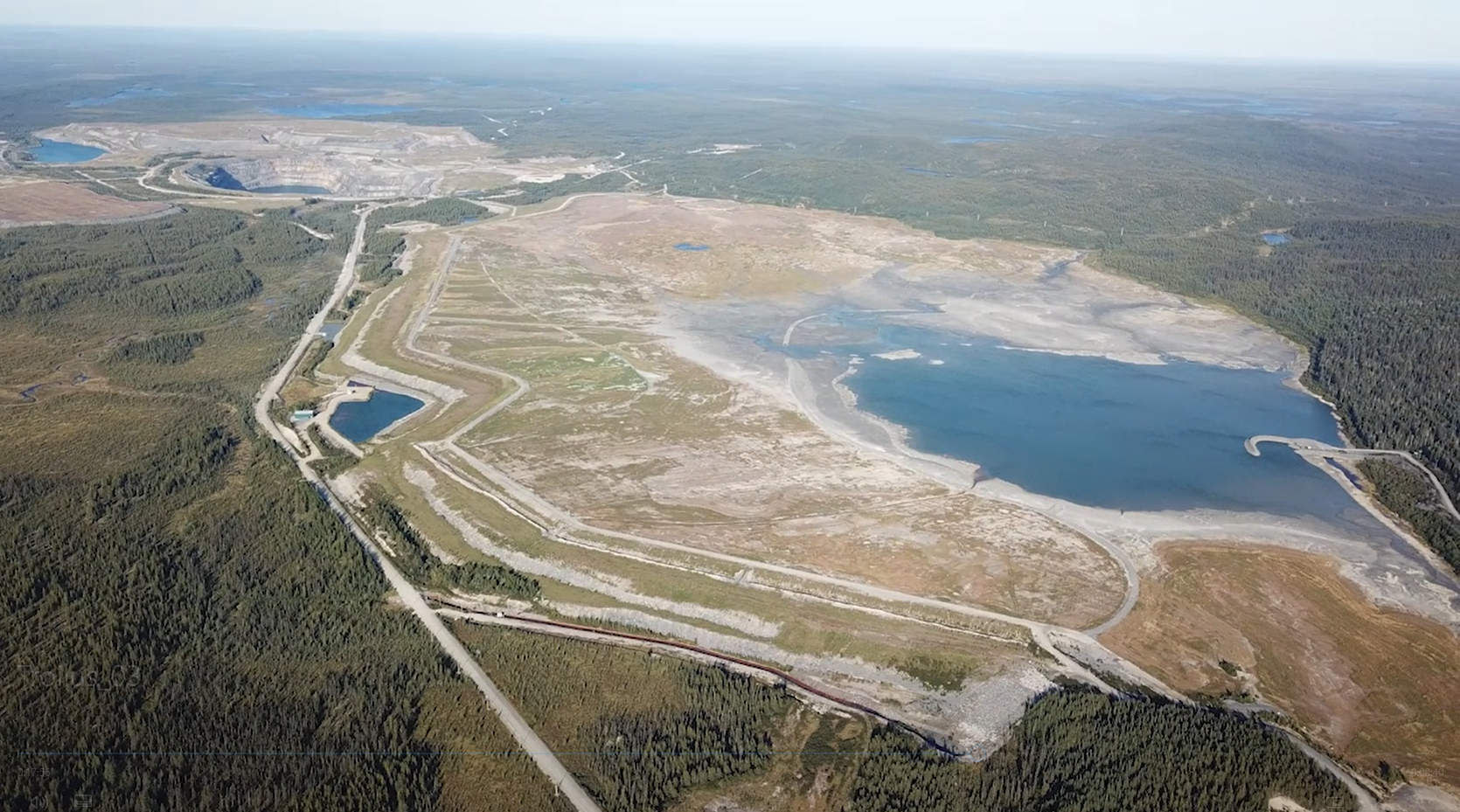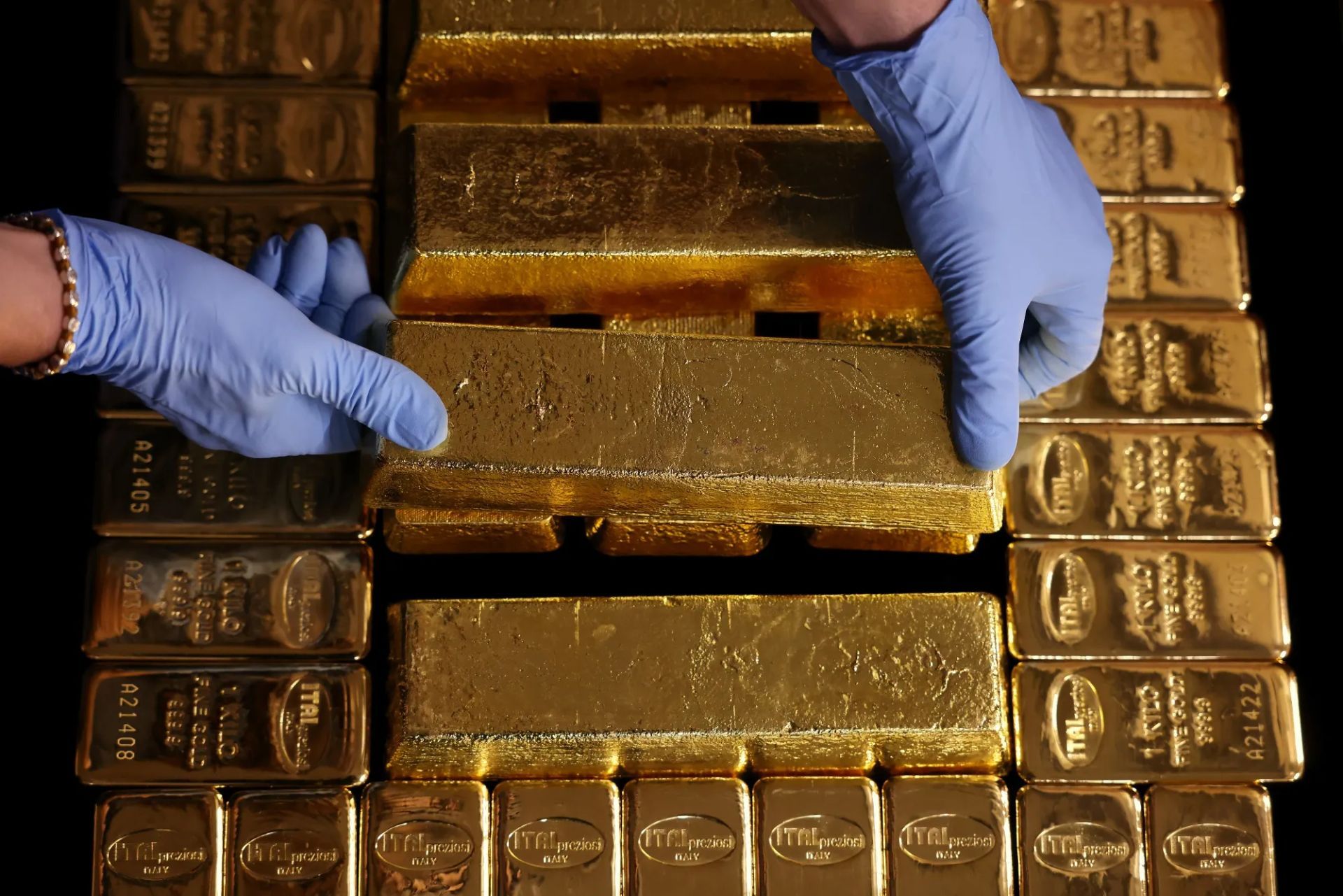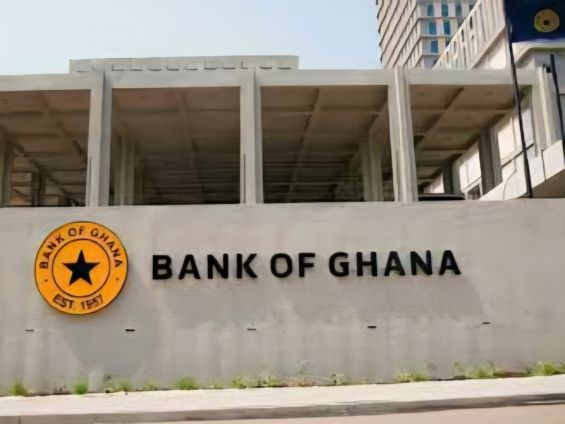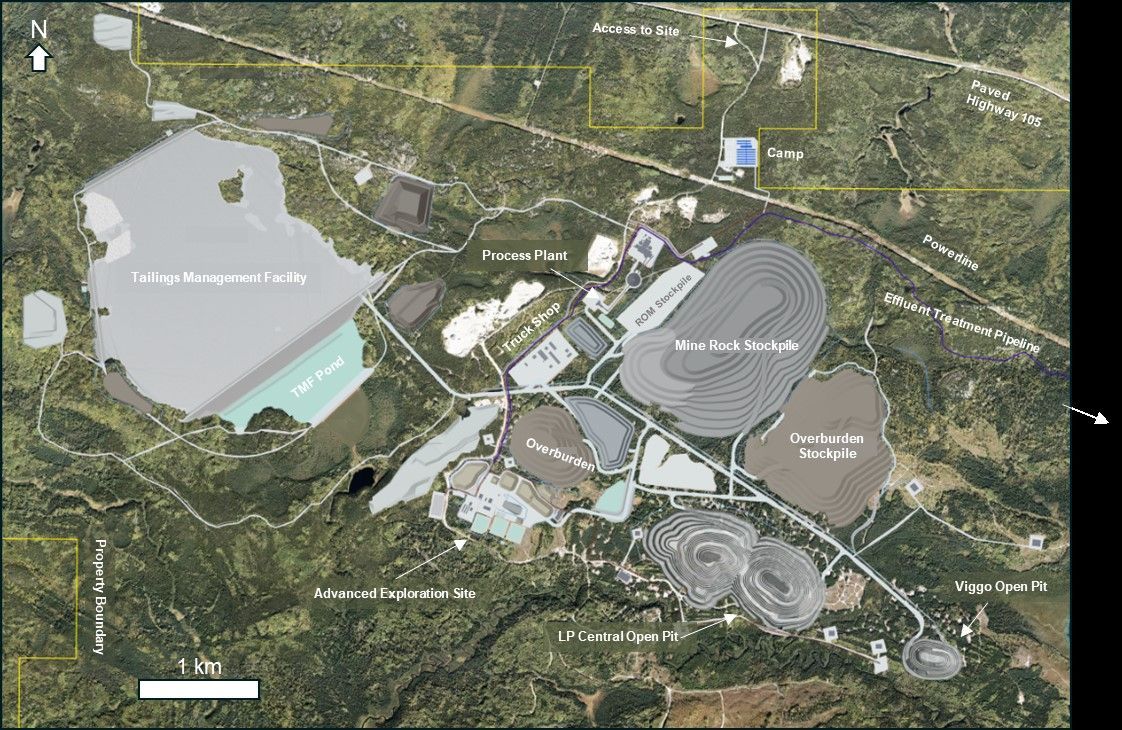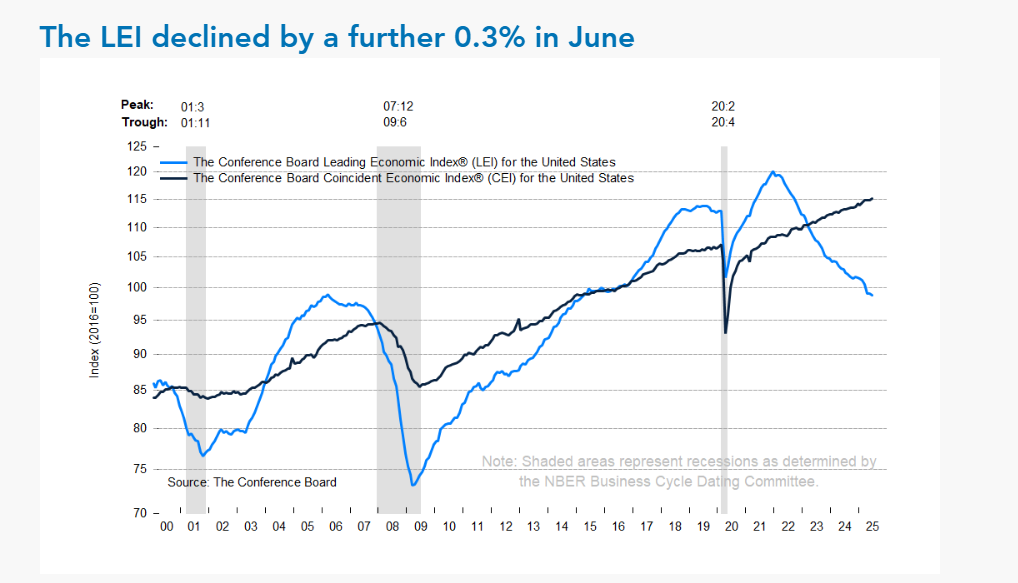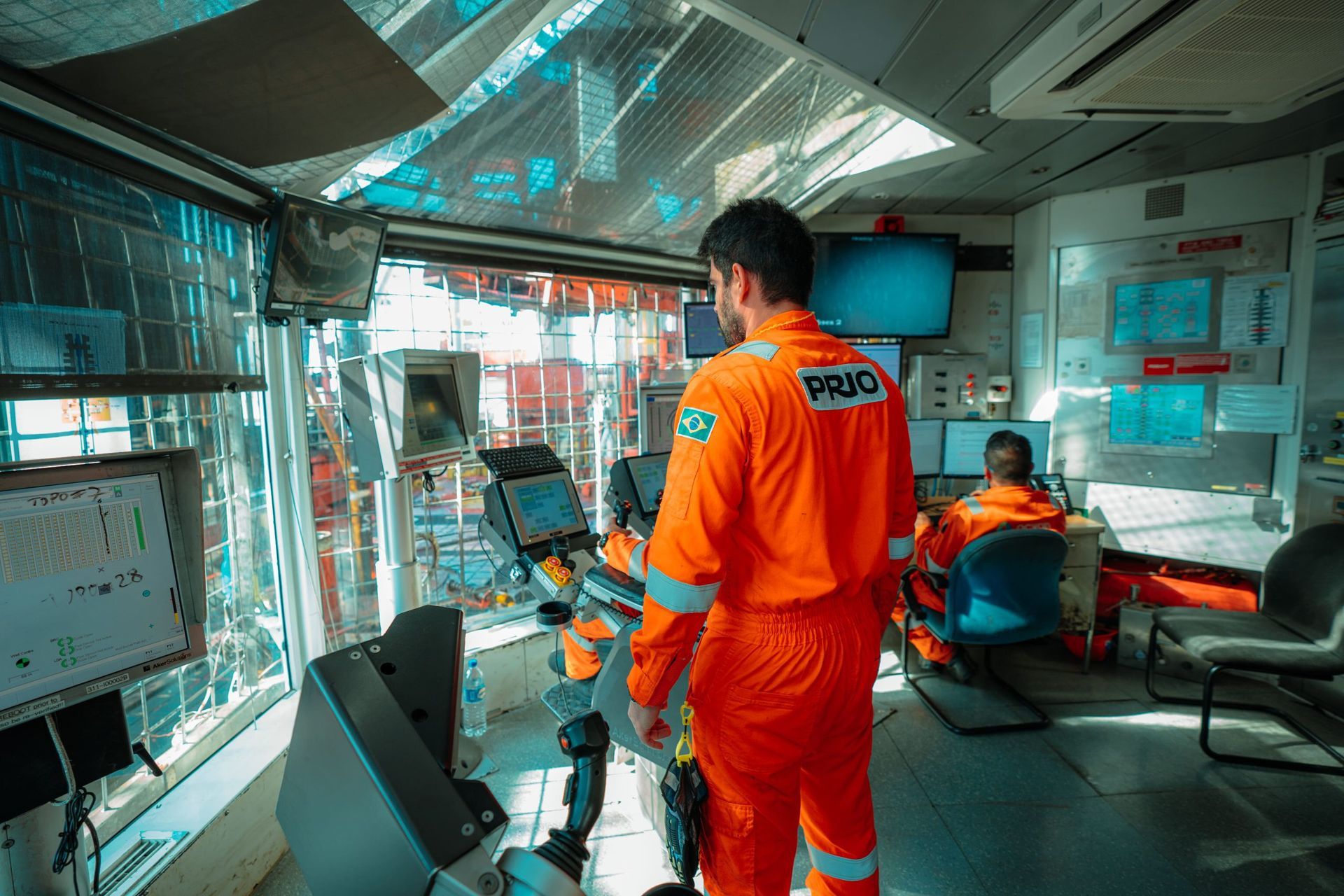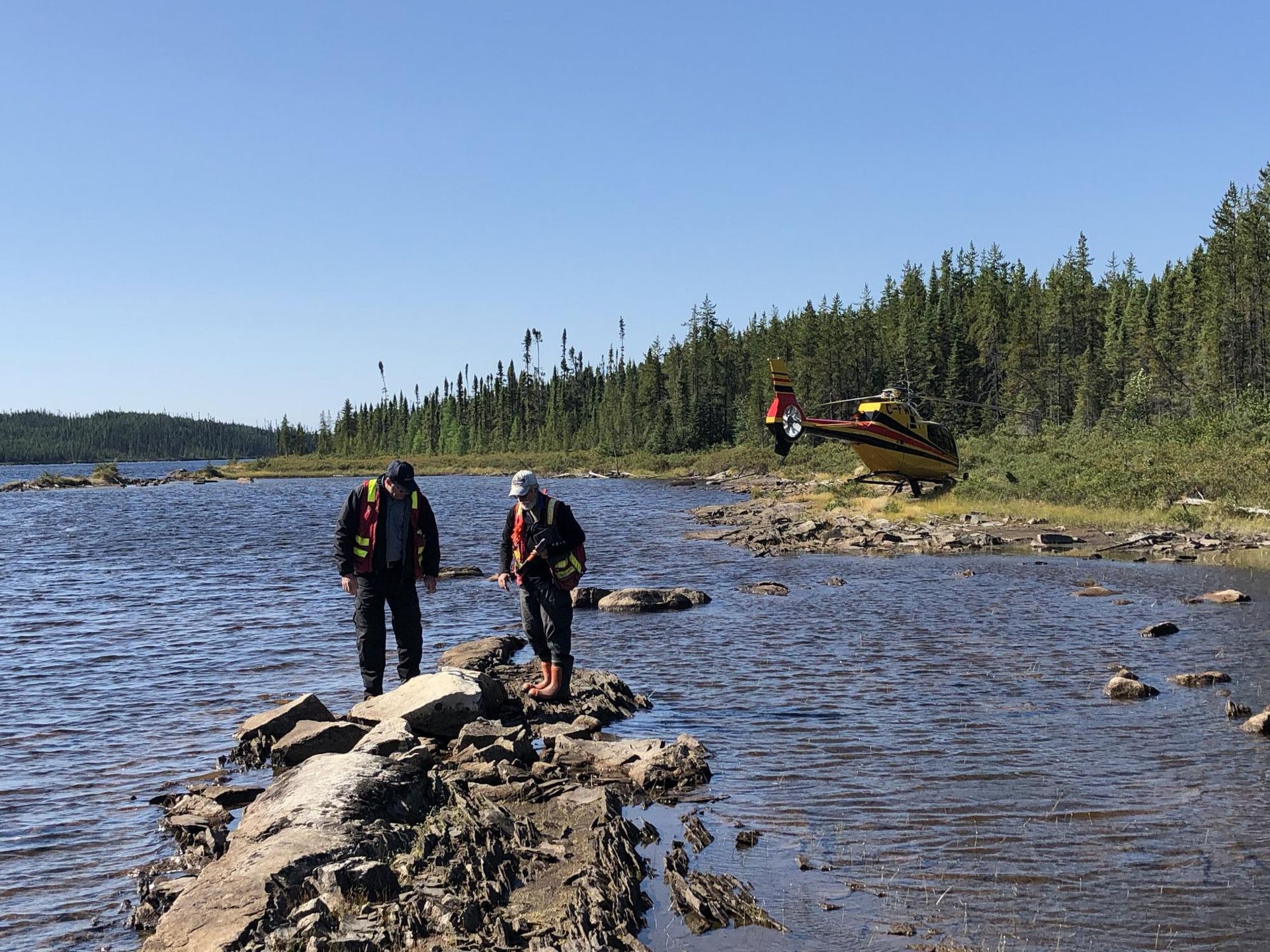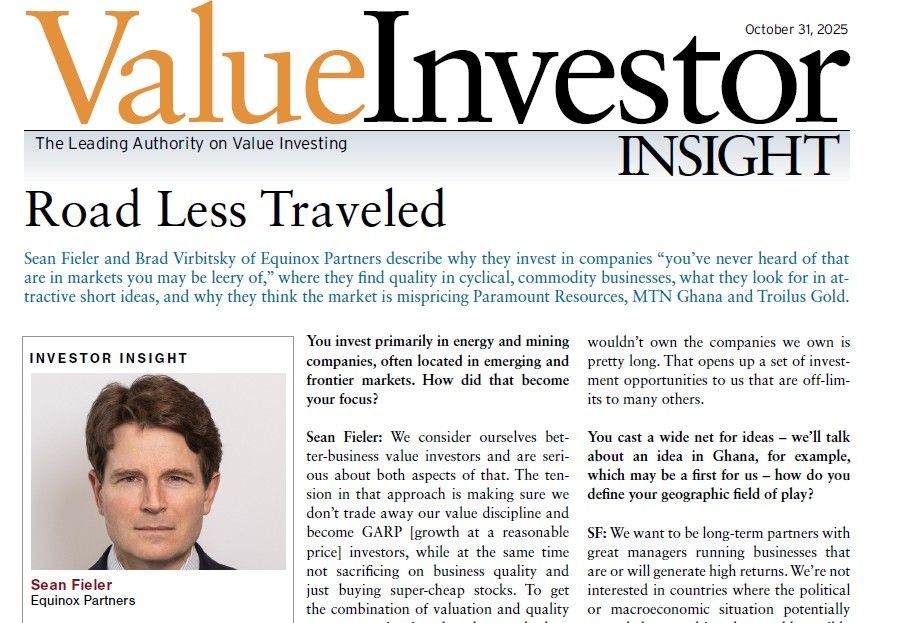Kuroto Fund, L.P. - Q1 2020 Letter
Dear Partners and Friends,
PERFORMANCE & PORTFOLIO
Kuroto Fund fell 28.1% in the first quarter of 2020. The EM index fell 23.6% over the same period.[1]
Our portfolio of 16 companies trades at just 7x our downwardly revised 2020 earnings estimates. This represents an enormous discount to 12.5x earnings for the EM index, especially given the quality of our businesses. We suspect that the first quarter low-tick in valuations has brought to a close the nine-year period during which our businesses grew while their value went sideways.
COronavirus and our Top-Ten Holdings
To clearly detail the impact of the coronavirus on our portfolio, we’ve provided a company-by-company analysis of our top ten positions.
MTN Ghana: 16.8% of 3.31.20 partners’ capital
We still expect MTN Ghana’s earnings to grow over 20% for the year. The company is trading at 6.5x our 2020 earnings forecast with a 10% dividend yield.
As the largest telecom company in Ghana, MTN should experience a slight uptick in usage from the stay-at-home measures being imposed in the country. MTN’s mobile money transfer and payments business should also benefit from the reduced use of cash because of concerns about the ability of cash to spread the coronavirus. The company has recently lowered fees on smaller transfers, and the government, in turn, has encouraged greater usage of MTN’s service.
Mobile money currently accounts for ~20% of MTN Ghana’s revenue. As this business becomes a larger percentage of MTN’s topline, we expect the company to command a higher valuation. In terms of balance sheet, P&L, and competitive position, mobile money is clearly superior to MTN’s telecom business. Even in the case of a prolonged economic slowdown in Ghana, MTN’s business should remain resilient. Moreover, the company is well prepared with a net cash position.
Logo Yazilim: 15.0%
We almost halved our estimate of Logo’s 2020 growth rate, from 30% to 16%. The company is trading at 16x our revised 2020 forecasts.
Logo is the dominant ERP software provider to small and medium sized businesses in Turkey. In February, the company guided to over 30% revenue growth for the year. But with the business disruptions from coronavirus continuing to grow, we are forecasting 16% revenue growth for the year with a similar level of earnings growth. Our estimates assume a severe disruption in Q2, with a gradual recovery in Q3 and Q4.
Logo is used to disruptions to its business plan given the challenges Turkey has faced over the past several years. Accordingly, we expect management to deal with the current crisis efficiently. In the case of a prolonged economic slowdown in Turkey, the company is well prepared, with a net cash position and a 26% ROE.
FPT: 11.5%
We have reduced FPT’s income growth forecasts for 2020 from 17% to -14%. The company is trading at 10x our revised 2020 forecasts.
FPT has three businesses: ERP outsourcing, broadband, and education. We expect FPT’s ERP business to grow just 15% this year, as the company will be unable to complete most projects in Q2 due to travel and work- from-home restrictions. Longer-term, the coronavirus should increase demand for the company’s digital transformation business and help FPT take market share from Chinese competitors. We decreased our estimated 2020 growth of the broadband business by 5%, but expect the business to be largely unaffected. FPT may actually experience an uptick in its FPT Play offering, which is the largest streaming service in Vietnam, with 39% market share versus 22% for Netflix. Finally, we have reduced our estimates for FPT’s education business by 15%. New enrollments will be hit as the education business moves online. Should the economic slowdown persist in Vietnam, FPT is well prepared with a net cash position and a 22% ROE.
Guaranty Trust Bank (GTB): 8.2%
We estimate that GTB’s earnings will decline 21% in 2020. Most of this decline is the result of increased provisioning. We have taken our cost-of-risk estimate from 0.8% of assets up to 3% in 2020 and 2% in 2021. While we cannot see it in the reported data yet, we know that GTB’s loan book will be hit by both the oil price drop as well as business interruptions from the coronavirus.
More generally, GTB is by all accounts the best prepared bank in the country for such a crisis. The bank’s liquidity ratio is 49%, leverage is less than 6x, and the capital adequacy ratio is 23%. Even with a tripling of the cost of risk, the bank will still generate a 20% ROE this year. The company trades at 3.5x our reduced earnings estimates, 0.7x book, and it just fully paid its dividend yield for the year. At today’s price, GTB has a 12% yield.
While GTB’s business will undoubtedly be hit by an extended economic dislocation, we are optimistic about both its near and long-term prospects. This crisis has prompted Nigeria to adopt some of the tough but necessary measures it has been putting off. In March, Nigeria ended its dual exchange rate regime and removed fuel subsidies. As the corona crisis eases, GTB should be perfectly positioned to grow into one of the world’s most underpenetrated banking markets. We added to our GTB position in early April.
Tanzania Breweries: 7.6%
We expect a decline in beer and spirits demand in Tanzania this year. Accordingly, we are forecasting a 26% decline in TBL’s profit and an ROE of just 18%. At these reduced levels of profitability, the company trades at 30x earnings.
Demand for TBL’s products will fall if and when the government forces the closure of bars, which account for the majority of beer sales in the country. Our estimates factor in a two-month bar closure. The closure, if it does happen, could obviously be much longer. On the other hand, off-site consumption may rise during a prolonged shutdown.
TBL’s free cash flow generation is strong enough that, with no debt, there is little chance of a dividend suspension this year even with a precipitous drop in sales. TBL remains the dominant beer franchise in Tanzania and with the recent success of its Castle Lite brand is poised to protect its current market share from further deterioration. Our largest concern is the company’s growth. We still do not know when to expect volume growth and the planned Dodoma plant expansion.
Grana y Montero: 6.8%
Grana y Montero, of all our top-ten holdings, has been the most affected by the coronavirus. Government lockdowns have brought a halt to almost all construction work in Peru. Accordingly, we expect Grana’s construction business to post substantial losses this year.
Peru’s fiscal package launched to counter the negative economic impact of the virus is an impressive 12%+ of GDP. That said, these funds are not earmarked for additional construction projects and do not provide direct assistance to companies as large as Grana. Some of Grana’s other businesses will remain profitable throughout the downturn. Grana’s midstream assets, which have only seen slight declines, will be cash generative. And, Grana’s infrastructure, while negatively affected due to traffic declines from the lockdowns, will still generate positive cash flow this year. Finally, on a positive note, the parent company is net cash and should not experience meaningful balance sheet stress.
Sonatel: 6.7%
Our 2020 Sonatel forecasts remain unchanged. We’re still expecting 10% earnings growth. The company is trading at 7x earnings and a 10% dividend yield.
Sonatel is the largest telecom company in Senegal, Mali, Guinea, and Guinea Bissau. Like MTN Ghana, Sonatel’s telecom business should prove particularly resilient to the coronavirus, with a tailwind from work-from-home measures and efforts to increase mobile money usage. Our thesis for Sonatel is similar to that of MTN Ghana: Sonatel is at an earlier stage of its transition to a capital-light, mobile-money transfer and payments business.
TBC Bank and Georgia Capital: 5.3% and 5.9% respectively
Due to its heavy reliance on tourism, the Georgian economy has been hard hit by the coronavirus.
For TBC Bank, we tripled our cost-of-risk estimate to 3% and decreased our loan-growth estimates for the year. The bank currently trades at 0.5x book value and 5x earnings on our revised 2020 estimates. TBC is the largest, most well-capitalized bank in the country. Over 80% of the bank’s loans are collateralized and the bank has a conservative leverage ratio of 6x. Moreover, the government has stated that they will subsidize loan payments for businesses in the most affected economic segments, like hospitality. We don’t expect the bank to face the kind of difficulties that the stock price is currently implying, and, as a result, we have recently added to our position in TBC.
As for Georgia Capital, the market has abruptly reduced the carrying value of its listed holdings, and we, in turn, have reduced the value of its unlisted holdings. Despite this sizable markdown in value, the company’s three largest businesses—a hospital, water utility, and bank—are all well positioned for the crisis. The holding company has stopped incremental investments and will be conserving cash until the Georgian economy reopens for business.
Orascom: 5.0%
Our 2020 Orascom forecasts remain unchanged; we’re still expecting 10% earnings growth. The company is trading at 5x earnings and generates a 13% dividend yield.
The coronavirus should be a short-term negative and a medium-term positive for Orascom. At the moment, Orascom’s contractors in Egypt are suffering from a government mandated 6pm to 7am curfew, which complicates the completion of certain road projects that have historically been carried out at night. When these restrictions are lifted, we expect a new round of government infrastructure spending to take effect. Orascom already has a strong current backlog which will benefit, while new government projects should add top-line growth. We expect this impressive contractor to generate 20%+ ROE for the foreseeable future.
Sincerely,
Sean Fieler
END NOTES
[1] Performance stated for Kuroto Fund, L.P. Class A on a net basis. An investor’s performance may differ based on timing of contributions, withdrawals, share class, and participation in new issues. Unless otherwise noted, all company-specific data is derived from internal analysis, company presentations, or Bloomberg. Company valuations and exposures are as of 3.31.20
